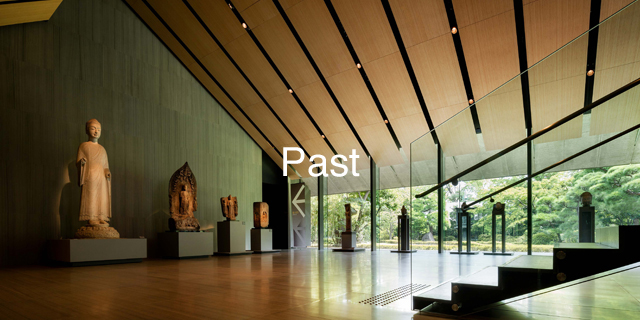
-
Special Exhibition
The Fragrant Sublime: Koryŏ Buddhist Paintings - Saturday, March 4th- Friday, March 31st, 2017
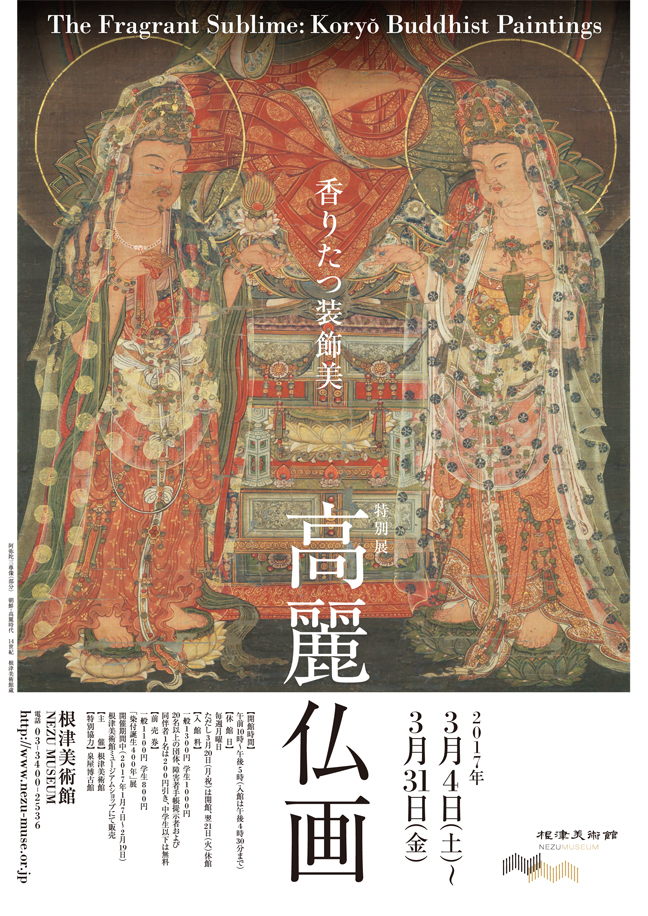

| Closed | Mondays, except 3/20 and closed on 3/21 |
|---|---|
| Hours | 10 am to 5 pm(Entrance closes 30 min. before closing) |
| General admission | Adult 1300 yen, Student 1000 yen |
| Gallery | 1/2 |
The Koryŏ dynasty (918-1392), the first to unify the entire Korean Peninsula, was a Buddhist state. Through repeated conflicts and considerable cultural exchanges with the nations surrounding it, Koryŏ developed a Buddhist culture without peer. The Fragrant Sublime: Koryŏ Buddhist Paintings is a special exhibition that offers an opportunity to experience masterpieces of Koryŏ Buddhist art from the eleventh to the fourteenth centuries.
The thirty-eight paintings and craft objects in this exhibition present a world of tranquil beauty that flowered in the land that has long been Japan’s neighbor. Included are stately images of Amitābha, the Water-Moon Avalokiteśvara depicted with unsurpassed elegance, imposing paintings of Kşitigabha, superbly decorated sutras transcribed in gold and silver, and handsome Buddhist implements. We hope that visitors will enjoy this world, whose distinctive beauty differs from that seen in Japanese Buddhist painting.
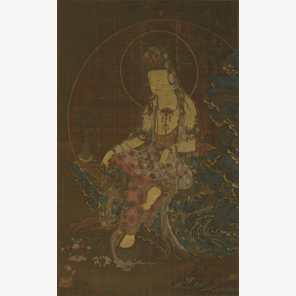

- Water-Moon AvalokiteśvaraBy Sŏ Gubang
- Dated 1323Sen-oku Hakuko Kan
- The mercy of Water-Moon Avalokiteśvara, seated on a rock against which the waves are breaking, was called upon to save the people of Koryŏ. In this quintessential image based on the “Chapter on Entry into the Realm of Reality” in the Avatamsaka sutra, the boy pilgrim Sudhana visits Avalokiteśvara on Mount Potalaka. This exhibition also includes renowned paintings of the Water-Moon Avalokiteśvara from the Sen-oku Hakuko Kan and Daitoku-ji (Kyoto) collections.
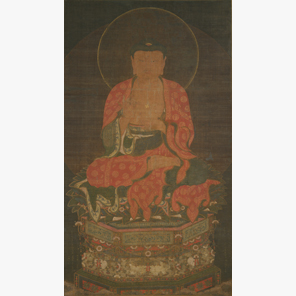

- Amitābha
- Dated 1306Nezu Museum
- King Chungnyeol of Koryŏ had fallen into a life-threatening crisis in Dadou, then the capital of China in the Yuan dynasty. According to the inscription on this painting, Kwŏn Dan, Chungnyeol’s chief retainer, ordered a skilled painter to produce this painting of Amitābha as a prayer for the king’s safe return. This masterpiece is thus also a witness to history.
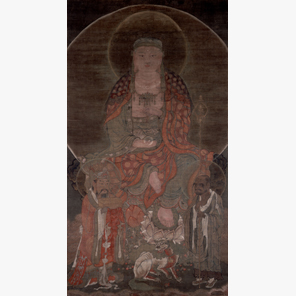

- Kşitigabha
- 13th-14th centuriesEngaku-ji, Kanagawa
- Images of Kşitigabha, the bodhisattva who governs the underworld, wearing a scarf over his head, reached the Korean peninsula via China from the remote Western Regions. This painting is a Kşitigabha triad, with the priest Daoming, who had experienced Hell, and the demon king Modu, the guide to Hell, positioned beneath the imposing figure of Kşitigabha. The powerful presence of this painting is quite overwhelming.
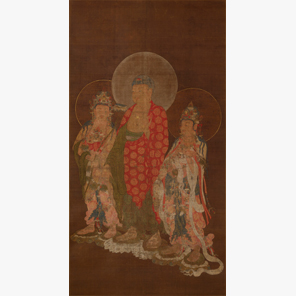
- Amitābha Triad
- 13th-14th centuriesHōdō-ji, Osaka
- This exhibition also includes superb paintings of the Amitābha, Avalokiteśvara, and Mahāsthāmaprāpta triads as well as Amitābha and the Eight Great Bodhisattvas. This painting from the Hōdō-ji is a splendid work of art, painted with precision, using the pure, clear colors that call to mind Song dynasty paintings.
